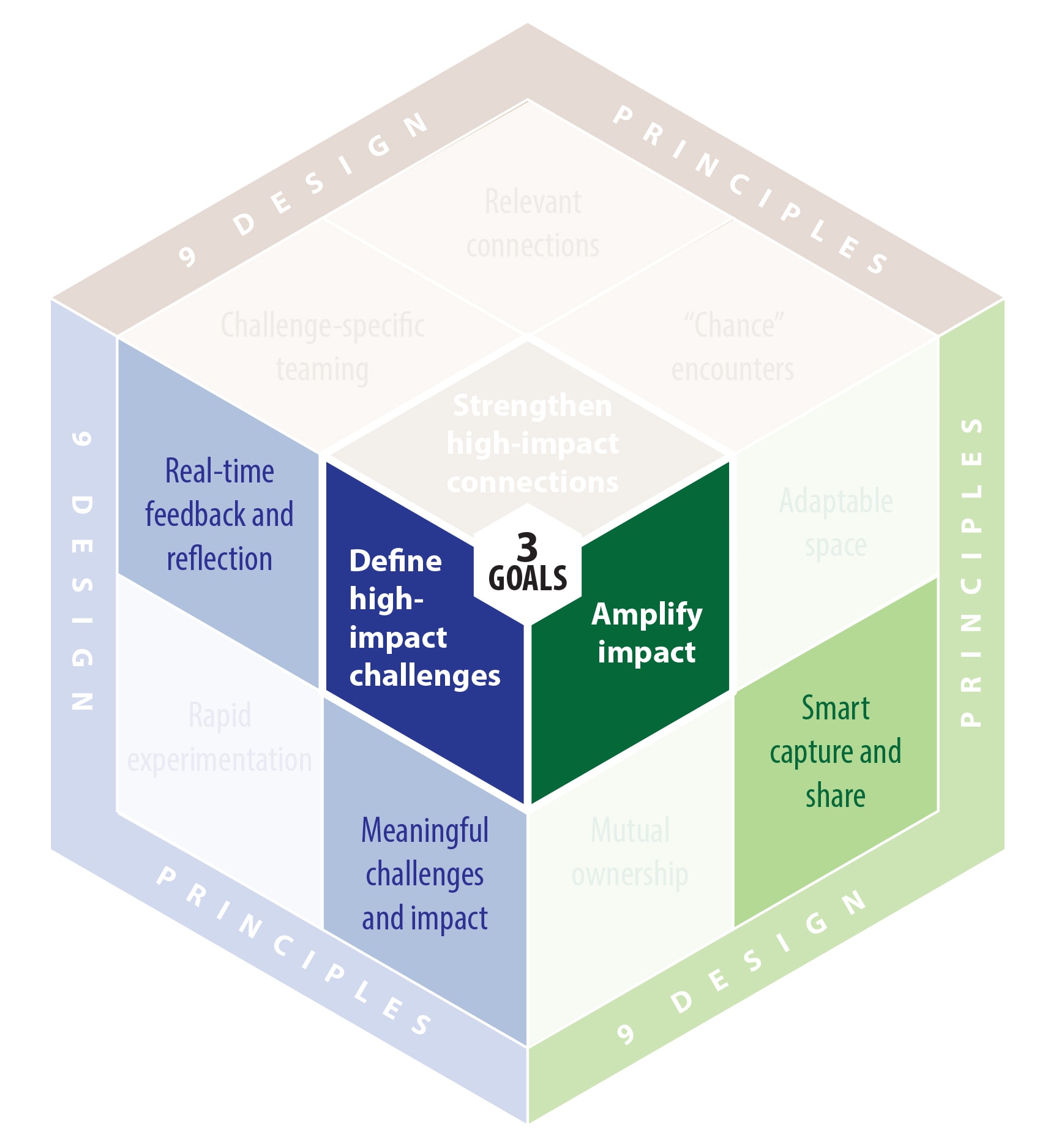LiveOps has been saved

LiveOps A case study in work environment redesign
20 June 2013
- Arthur Sheyn
LiveOps’s distributed workforce uses an internal collaborative forum to enable peer-to-peer learning, while transparency into performance relative to peers creates a healthy sense of competition.
Can the way the workplace is constructed—physically, virtually, and managerially—affect employee performance? The Deloitte LLP Center for the Edge report Work environment redesign, based on a study of more than 75 organizations, argues that the work environment can have a critical impact on employee productivity, passion, and innovation. The study outlines nine design principles that can help employers gain more value from their people.
This case study explores ways that LiveOps, a cloud contact center solution company, is applying these design principles to enhance its own corporate environment.
Figure 1. Work environment design principles used at LiveOps
Company background and results
LiveOps is a Silicon Valley-based technology company that provides multi-channel cloud contact center and customer service solutions for other companies. Using a community of more than 20,000 US-based, independently contracted home agents, LiveOps provides scalable solutions for its customers. This vast and flexible network is able to answer 98.5 percent of all calls, with 90 percent of them answered within 20 seconds,1 and can deliver up to 33 percent more revenue per campaign.
At LiveOps, the independent agents operate in an environment in which the better they perform on calls, the more calls the automated system sends them. High performers also receive priority when choosing schedules. This meritocracy motivates each agent to learn and improve, as more calls result in a larger paycheck. To enhance agent performance, LiveOps provides forums and chat tools through which experienced, accomplished agents provide tips and pointers to newcomers. LiveOps has also developed a real-time feedback system in the form of a personalized performance dashboard, giving each agent the ability to know exactly what they do well and where they need to improve in terms of answering calls more effectively.2
Smart capture and share
Because of LiveOps’s distributed workforce, the company has had to innovate to develop solutions that allow peer-to-peer learning, which enables their agents to grow and learn organically. The core of LiveOps’s solution lies in the internal forum tool that the company created for its agents. These tools are heavily used:
- One forum category, called “Hot Topics,” has more than 60,000 topics and 1 million postings.
- Another category allows agents to share leading practices on how to maximize their earnings and share the month’s invoicing progress.
- Product-specific boards allow agents to share recommendations on how best to sell a given product.
- Some categories go beyond core agent duties, addressing leading practices around setting up a home business (for instance, noting preferred phones and headsets for home-based work).
- A forum called “Technical Support” allows agents to seek and supply technical advice.
- The “Do It Yourself!” forum lets agents solicit and provide tips, tricks, and leading practices for becoming a more successful LiveOps agent.
- The “Virtual Water Cooler” helps overcome geographical distance by allowing agents to talk about the weather, where they’re from, or any other non-work-related subject.
Confused new users ask for and receive advice from veteran agents. A single question often results in a healthy online conversation with several responses and proposed solutions, as well as confirmation of leading solutions and new questions related to the topic. This system fosters learning on demand across the community, which helps agents improve their performance. As these conversations occur, the smart system captures the transfer of knowledge, creating a shareable database for other agents to consult.3
Meaningful challenges and impact and real-time feedback
LiveOps works with each of its customers to customize metrics to ensure a positive outcome for campaigns and programs. Some examples of key performance indicators are:
- Percentage of calls answered
- Percentage of inquiries converted to orders
- Revenue per call
- Customer satisfaction score generated through an end-of-call survey
Figure 2. Sample LiveOps agent performance dashboard
The selected customer/program-specific metrics are then communicated to the independent agent community. These challenges are meaningful to agents for two primary reasons. First, they communicate the level of performance necessary for agents to remain eligible to take calls for a specific program. Second, they communicate to agents the most important areas of impact on the customer. These metrics and targets are visible in real time to the agents through an online dashboard (see figure 2). This dashboard is continuously updated, providing real-time feedback after each call so that agents can see how they are doing relative to their peer group and where specifically they should focus to improve their performance metrics (such as first call resolution or average handle time). This level of performance data transparency creates a meritocracy, as agents are compared to their peers and rewarded based on their relative performance.
Lessons learned
- In a system where individual employees are motivated to gather information and to learn techniques for improvement, implementing tools such as internal forums that facilitate and capture knowledge flows can help employees more effectively develop and perform.
- Providing employees with context-specific, time-relevant feedback, such as metrics-based feedback on their performance through live dashboards, can help individuals identify key development needs and better target areas for improvement.
- An organization can tap into individuals’ motivations by transparently showing employees how they are performing on key metrics against their peer group (for example, by using force-ranked leaderboards).
© 2021. See Terms of Use for more information.


